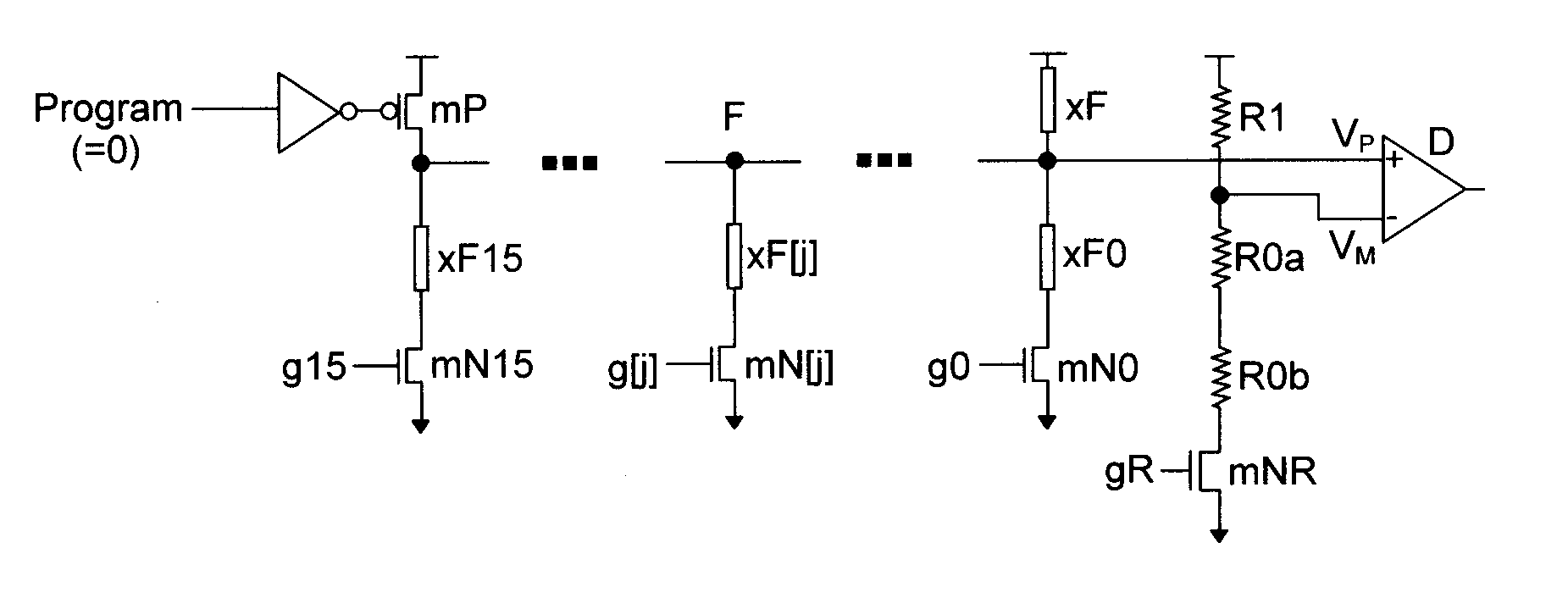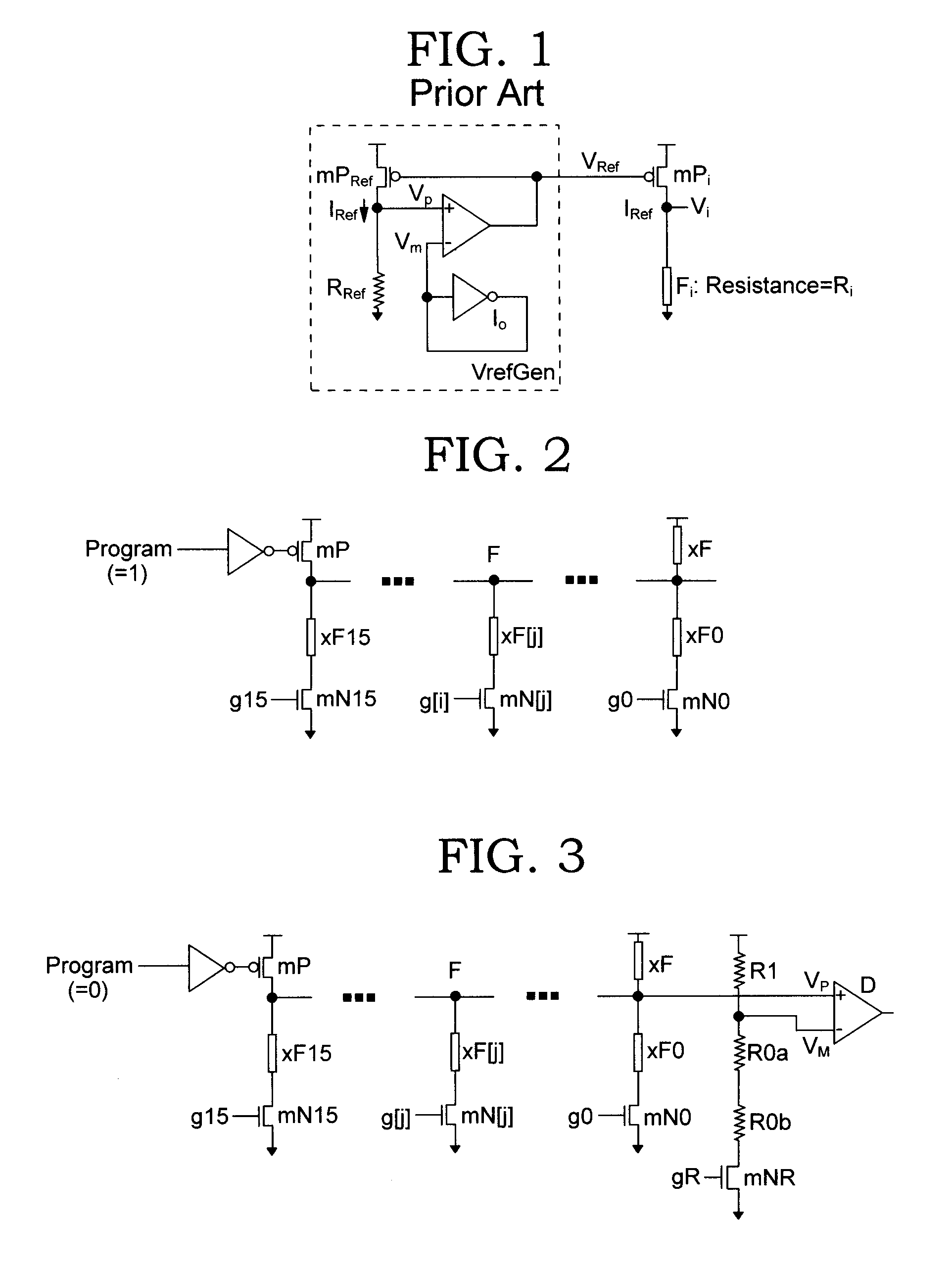Low voltage programmable eFuse with differential sensing scheme
a programmable efuse and differential sensing technology, applied in the field of low voltage programmable efuses with differential sensing schemes, can solve the problems of increasing programming and test time cycles, consuming a disproportionate amount of interconnect resources, and difficulty in providing sufficient voltage to program the efuse without damaging logic circuitry, so as to achieve low circuit overhead, reduce the effect of additional processing steps and discriminating low resistan
- Summary
- Abstract
- Description
- Claims
- Application Information
AI Technical Summary
Benefits of technology
Problems solved by technology
Method used
Image
Examples
Embodiment Construction
[0025]FIG. 2 depicts the primary elements of the fuse-programming circuitry for a preferred embodiment of the present invention. A large PMOS mP pulls node F to Vdd, and a single decoded signal g[j] out of the group g[15:0] may be asserted for about 200 us to turn on pull-down transistor mN[j] and draw sufficient current through fuse xF[j] to change the resistance and program the fuse. Programming is accomplished by raising Vdd to about 1.5 times its normal value. However, each fuse requires only about 200 us to be programmed, so the total time for all fuses to be programmed is much less compared to the time the product is subjected to 1.5 times Vdd or greater during a device “burn-in” or other diagnostic tests, such as a dynamic voltage screen. During the programming operation, an extra fuse xF used during the sense operation is shorted out by transistor mP. Transistor mP serves the function of pulling node F all the way to Vdd to provide as much current as possible to program fuse...
PUM
 Login to View More
Login to View More Abstract
Description
Claims
Application Information
 Login to View More
Login to View More - R&D
- Intellectual Property
- Life Sciences
- Materials
- Tech Scout
- Unparalleled Data Quality
- Higher Quality Content
- 60% Fewer Hallucinations
Browse by: Latest US Patents, China's latest patents, Technical Efficacy Thesaurus, Application Domain, Technology Topic, Popular Technical Reports.
© 2025 PatSnap. All rights reserved.Legal|Privacy policy|Modern Slavery Act Transparency Statement|Sitemap|About US| Contact US: help@patsnap.com



